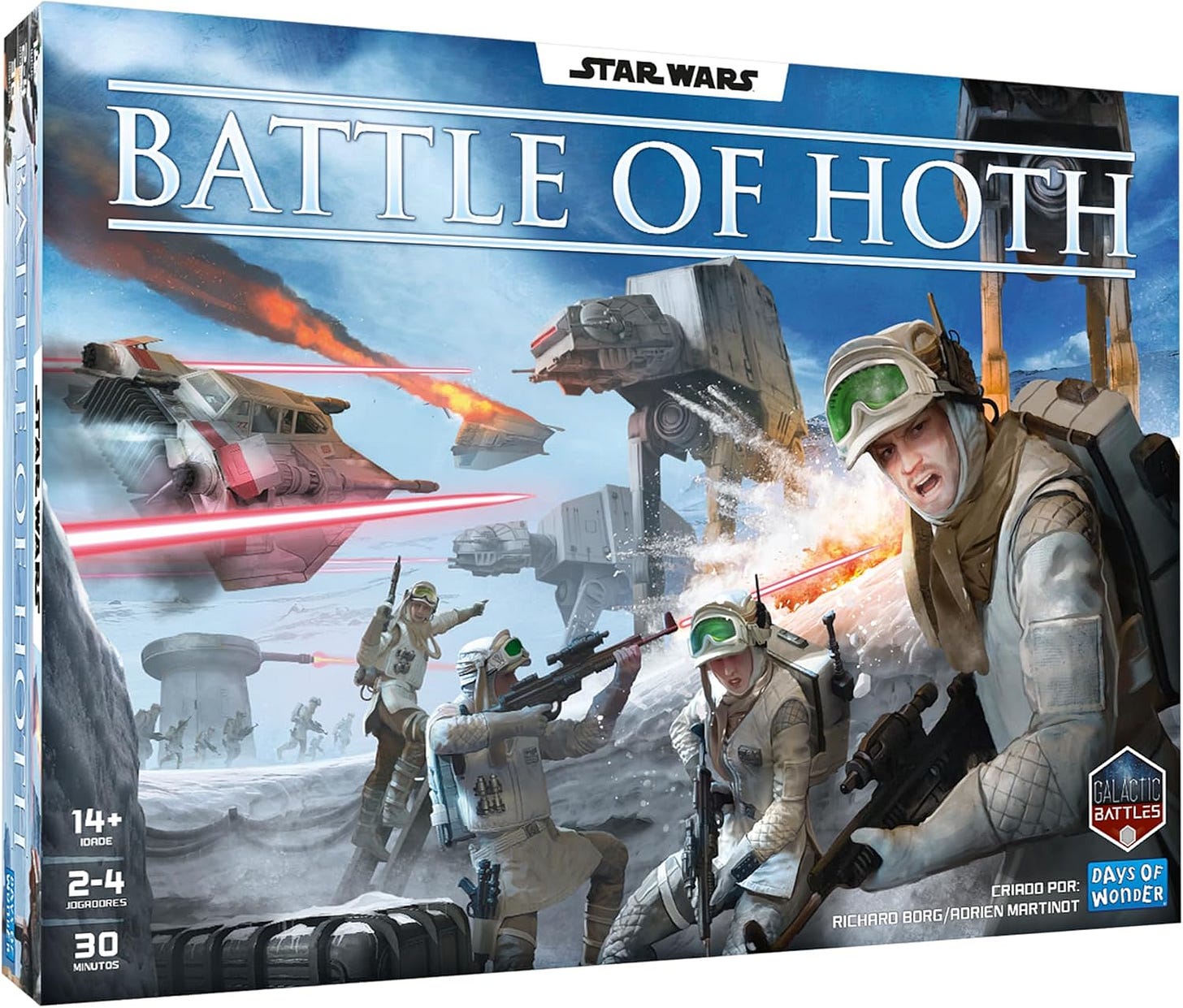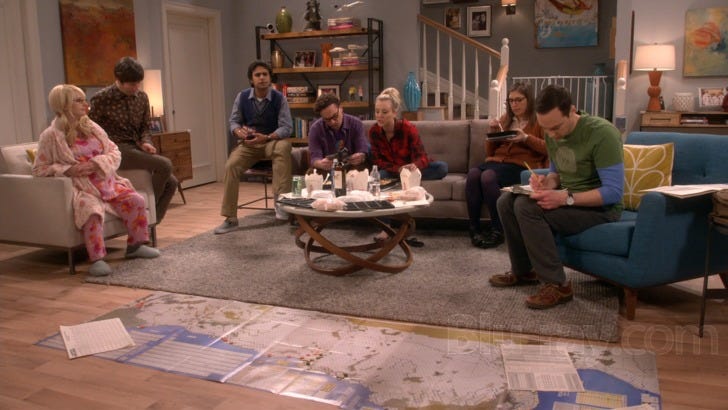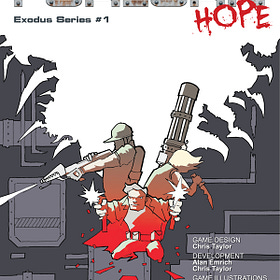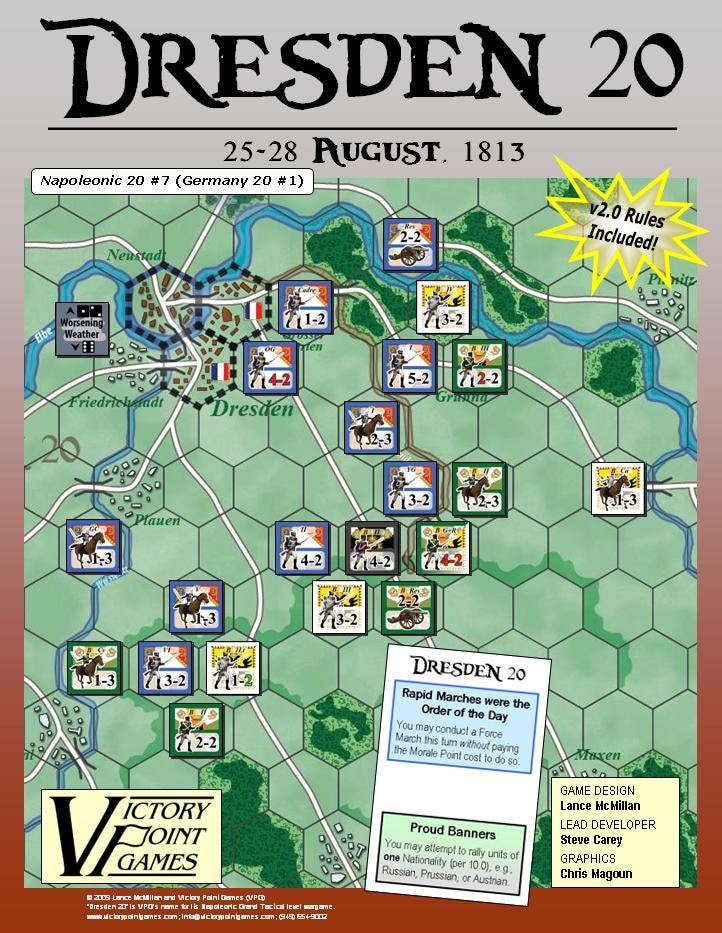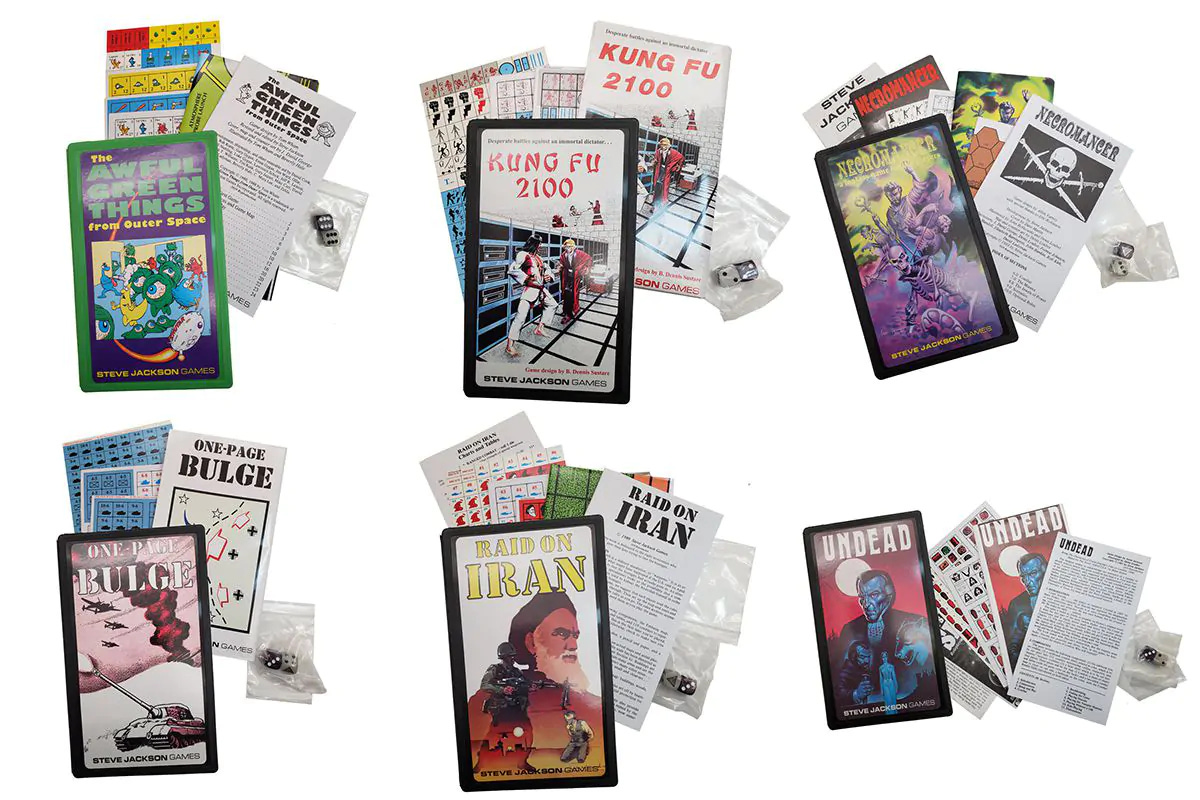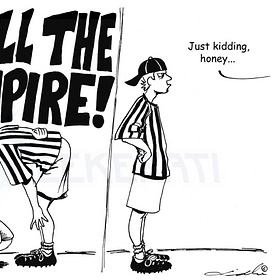We Need More Game Mentorfacturers
I know, I know. I’m not sold on the neologism either, but I am sold on the concept.
Regular readers of this Newsletter are well aware of the fact that I collect and play role playing and board games. My collection of each is quite large and ranges from the original D&D White Box by TSR to second wave retroclones like the Sword & Wizardry White Box from Brave Halfling Publishing on the role playing side, and games ranging from Milton Bradley’s Dogfight to Days of Wonder’s excellent Memoir ‘44 on the board game side. To be honest, I think I own the entire Command and Colors series of entry friendly hobby wargames including the recently released Battle of Hoth game that was recently released.
What readers may not be aware of is the fact that I am also a fan of simulation war games as well. My collection currently includes the full line of Squad Leader boxed sets -- the precursor to Advanced Squad Leader (of which I only own a couple of Starter Kits) -- and a nice collection of issues of Strategy and Tactics and World at War among other things. My introduction to this particular market within the gaming hobby came during middle school when a friend named Christian Hunt introduced me to Steve Jackson’s excellent mini-game Ogre which featured an artificially intelligent supertank crushing a small defensive force of human soldiers. The game was great fun, and it used all the classic components that I came to learn are a part of the traditional war game -- i.e. hexagon maps, small 1/2” counters (hand or die cut depending on the game), and a Combat Results Table (or CRT). Ogre, with its small and easy to learn rules set, deeply ingrained an appreciation for how fun war games can be and made it possible for me to try out more complex rules sets -- though I must admit that I’ve yet to try Drang Nach Osten! or The Campaign for North Africa.
The vast majority of war games are time consuming affairs that take up a good deal of table space and require either familiarity with the underlying systems of a series of games, or the patience and time to read a complex rules set. This is one of the reasons there have been so many wargamers who play these games solitaire over the years. It can be hard to find someone else who had the time, energy, and interest to pour through pages of rules and who also spent the time futzing around with them enough that the two (or more) of you could just get straight to playing without one player having to teach the other the basics of the systems etc.
This “intimidation gap,” particularly acute in monsters like Drang Nach Osten and The Campaign for North Africa, is one of the reasons that I believe that Metagaming’s line of mini-games (which started with Ogre) were so successful. They provided small, approachable, quick, and playable games that in turn gave players a substantive and robust gaming experience. A game like Ogre initially appears to have little strategic depth, but one quickly learns otherwise. In a way, the mini-game was the Eurogame before there was a Eurogame.
I used to lament the lack of a vibrant “mini-game” community of manufacturers. I believed, wrongly as it turns out, that there were few if any publishers selling games that offered depth of wargame experience with the compactness and playability of a mini-game or a Euro-game. I knew of Eurogames like Neuroshima Hex which were Euro-style games that approached the war game experience. I was even familiar with the Euro-influenced Card Driven Strategy war games available on the market -- ranging from the aforementioned Command and Colors to Paths of Glory. I was looking for a company more akin to Metagaming back in its heyday or Steve Jackson Games during its early years. I was looking for a new wave of games like Ogre.
I didn’t believe they existed.
Then I saw an advertisement for a new Independent French War Game Magazine called BATTLES, French but published in English. That’s right, a French magazine. The first issue of BATTLES contained a nice, playable, and quick wargame, in contrast to the comparably monster games of Strategy and Tactics, that had excellent quality components. The game was beautiful by war game standards...not to mention the magazine. BATTLES is a graphically amazing magazine that covers the war game hobby as a whole, rather than focusing on “in house” games as some other war game magazines do. The magazine is sadly out of print (and back issues are essentially gold bullion) now but Olivier Revenu, the editor and publisher of BATTLES, has moved on to create The Merry Mushmen who straight up publish some of the best looking products for Dungeons & Dragons on the market today. But enough about BATTLES, or rather not enough but I’ll save some comments for posts regarding the magazine, I want to talk about an American company that I found out about because of BATTLES.
You read that series of sentences correctly. I found out about an excellent, but now sadly defunct, American (Southern Californian in fact) game company by reading a French war game magazine (published in English). Talk about the world being flat!
That game company was Victory Point Games and they operated out of Irvine, CA and they featured a business model that I think the modern gaming market very much needs. The story of the game company’s founding, and the Wild West nature of their product line/production schedule, were very reminiscent of all the qualities I admire about Metagaming and Steve Jackson. The company started as an extension of a college course, and became something of a “community course” in game design. From their old, and now gone from the internet outside of the Wayback Machine, “About Us:”
Most great game ideas begin with an impassioned gamer thinking about a game and saying, “Wouldn’t it be cool if…?” That’s how the best game ideas occur – not from bottom-line watching bean counters, not from Sales or Marketing, not through scientific research – it is gamer passion that creates the best games.
Enter Alan Emrich, who was teaching various game-related subjects such as Game Design, Game Prototyping, and Game Project Management at The Art Institute of California: Orange County in 2007. An impassioned gamer himself, while teaching other impassioned gamers about the art, craft, and science of making games, he had one of those “Wouldn’t it be cool if…?” moments. Although he had been ‘designing game designers’ among his students for some time, the notion arrived as a culmination of thoughts coalesced.
Just as some genius at Reese’s figured out one day, “Hey, what if put the chocolate and peanut butter together?,” Alan blended the ideas of Desktop Publishing (DTP) with his students’ game projects. The seed of an idea for Victory Point Games was planted.
“Wouldn’t it be cool if,” Alan reasoned, “I could desktop publish a few copies of some of my students’ better course project games? That way, when they graduate and go find jobs in the game industry, they’ll have a published title to their credit and a copy of it in their portfolios. That would certainly be a plus on their resume and at job interviews. What a great graduation gift I could give them!” This became a notion that he had to pursue.
You can look through their website using the old Wayback Machine links and you’ll find a deep catalog of games that appeal to the simulation gamer, with creations by well regarded creators like Jim Dunnigan, Joe Miranda, and Frank Chadwick, as well as light-hearted games that appeal to the casual gamer. Games like Forlorn Hope and Nemo’s War address topics (space marines vs. aliens and Captain Nemo’s world on the world’s navies) that don’t fit within the narrow confines of traditional wargaming. I reviewed their game Forlorn Hope back in April and I’ll be reviewing many more as time and actual play experience allow.
Table Top Retro-Review: Forlorn Hope
A couple of weeks ago, I wrote a brief obituary for Alan Emrich and discussed how much a brief visit to the old Victory Point Games office meant to me as a gamer. During that visit, I play tested th…
If you dig long enough into the site, you will also find blog entries discussing Victory Point Games’ business model, and giving advice on how to design your own games the “victory point way.”
Their catalog was filled with games by gamers for gamers, but they weren’t just games by gamers for “hardcore” gamers. These games were for both experienced and inexperienced gamers. You won’t find any games that have “hundred” of die cut counters in their old catalog. In fact, they had an entire line of games that featured no more than 20 counters used during play.
Everything about the company echoed Steve Jackson’s early days -- before everything they made was Munchkin! Back in those days SJG produced games like One Page Bulge (which had one page of rules), Ogre, Car Wars, Undead, and Kung Fu 2100 (which I’ll be reviewing soon). The games were innovative and fun and made by people who obviously loved what they were doing. Add to this that SJG’s house magazine The Space Gamer had a series of articles discussing the art of game design and you quickly see some parallels between the two entities.
Don’t get me wrong. SJG is a great company and I am grateful that they have republished their collection of Pocket Box games. They do have fun casual games like Zombie Dice and Cthulhu Dice. In fact, I think that SJG has managed to recapture a bit of the creative spirit that was lost for a time as they focused on the best way to pay the bills. My point is that Victory Point Games behaved like SJG did when they were small and hungry because they were more than just a publisher, they were game design mentors.
Victory Point Games was indicative of a movement in wargaming similar to the “Old School Renaissance” movement in role playing. It was a movement of gamers who want to break from the current fads of gaming and introduce the world to a robust and vital hobby.
I was all for it, but that era didn’t last forever. Eventually Alan Emerich moved out of Southern California and Victory Point Games started publishing their games less of a Desktop Publishing Fashion. This first happened when GMT started publishing some of their more successful titles, like No Retreat! and Napoleonic 20. Then they published “Deluxe” editions of games like Nemo’s War and Dawn of the Zeds. The company was attempting to move beyond the niche of DIY gamers, but I think this was the wrong decision. In the end, Victory Point Games was sold to Tabletop Tycoon and eventually everyone from VPG was fired from Tabletop Tycoon. Alan Emrich responded to this by creating the Watchword Studio where he continued to blog about game design and worked on developing games for publication, including Frank Chadwick’s ETO games, but the DIY and Desktop Publishing aspects were gone.
One of my favorite gaming moments was driving down to Irvine and touring the Victory Point Games studio and asking if it would be possible to design my own game. The answer was yes. They’d help me put it all together and let me play test on site. Sure, I’d have to supply art and write the rules, but I could use their templates to create components (initially limited to existing printing die, but eventually including laser cut pieces). This was all free to me and if my game passed muster, they’d offer it for sale on their site. While I was there I also got to playtest a game with Chris Taylor and ask him permission to do a fantasy game based on the Forlorn Hope rules. He said, “sure” and I’ve still got my rough draft hanging around in my files.
You can get a glimpse of what it was like to playtest a game, and what the components were like, in this video discussing Danube 20 (one of the Napoleonic 20 series of games). In this case, the game being demonstrated is a Nappoleonic wargame that was designed to have fewer than 20 pieces on the board at any given time. Let’s just say that this is not common in Napoleonic games, but that it is a refreshing and educational way to approach the Napoleonic Wars.
Alan Emrich died earlier this year, and I wrote my obituary for him in a January Weekly Geekly, and he never rekindled the full DIY experience from his new home in New Hampshire. Emrich was only 65 at the time of his death and the game design community needs more people like him. There are too few mentors in the hobby, but there are some out there if you can find them. More importantly, there are too few Mentorfacturers in the hobby. I think we need a few more and if I ever win the lottery, there will be signs and one of those signs will be the creation of a Desktop Publishing gaming studio where people can design, playtest, and sell their role playing and wargaming creations.




